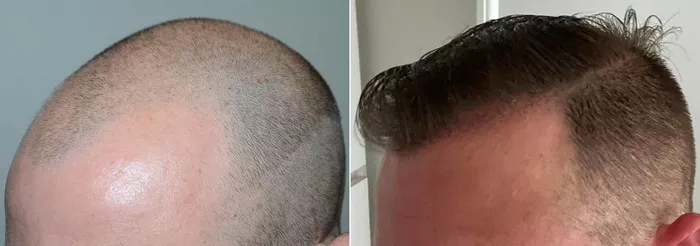In the realm of hair transplant procedures, individuals often find themselves contemplating the prospect of a second transplant to achieve desired density or address additional areas of hair loss. The decision to undergo a second hair transplant is nuanced, and understanding the optimal waiting period is crucial for maximizing results. In this guide, we explore the factors influencing the timing of a second hair transplant and provide actionable insights for those considering this transformative journey.
1. Initial Recovery Period: Setting the Foundation for Success
The initial recovery period following a hair transplant lays the foundation for the success of any subsequent procedures. This phase is critical in ensuring the health and vitality of the transplanted hair, allowing it to establish itself in the recipient area.
a. Post-Transplant Healing Time: The first few weeks after a hair transplant are dedicated to the healing process. During this time, the transplanted follicles undergo a delicate phase of adaptation, and patience is key.
b. Monitoring Growth: Patients are advised to closely monitor the growth of the transplanted hair during the initial recovery period. This observation provides insights into the overall success of the transplant and informs decisions about a second procedure.
c. Surgeon’s Assessment: Consulting with the surgeon during follow-up appointments is crucial. Experienced surgeons can assess the progress of the initial transplant and provide personalized recommendations regarding the timing of any subsequent procedures.
2. Assessing Hair Density and Aesthetic Goals
The decision to undergo a second hair transplant is often driven by the desire for increased hair density or addressing areas that were not covered in the initial procedure. Assessing these aesthetic goals plays a pivotal role in determining the ideal waiting period.
a. Evaluating Hair Density: Patients should give ample time for the transplanted hair to grow and mature, allowing a more accurate assessment of overall hair density. This evaluation is essential for understanding the need for additional grafts.
b. Aesthetic Consultation: Consulting with a skilled hair transplant surgeon for an aesthetic evaluation is crucial. Surgeons can provide insights into achieving the desired look and recommend the optimal timing for a second procedure.
c. Setting Realistic Expectations: Patients must have realistic expectations regarding the achievable hair density. Understanding that multiple sessions may be necessary is essential for a successful and satisfying outcome.
3. Scalp Condition and Health: A Decisive Factor
The health of the scalp and the overall condition of the hair play a decisive role in determining when it is appropriate to undergo a second hair transplant. A healthy scalp fosters optimal conditions for successful grafting.
a. Scalp Healing: The scalp needs sufficient time to heal from the trauma of the initial transplant. Rushing into a second procedure before complete healing may compromise results.
b. Assessing Scalp Health: Regular assessments of the scalp’s health, conducted either through self-examination or professional consultations, provide valuable insights into its readiness for a subsequent transplant.
c. Hair Quality: The quality of existing hair in the donor and recipient areas is a critical consideration. Healthy, robust hair contributes to the success of a second hair transplant.
4. Psychological Preparedness: A Key Aspect of Timing
The decision to undergo a second hair transplant is not only physical but also psychological. Patients need to be mentally prepared for the process, understanding the commitment involved and managing expectations.
a. Emotional Recovery: The psychological impact of the initial transplant should not be underestimated. Patients must allow time for emotional recovery before embarking on a second procedure.
b. Understanding the Process: Educating oneself about the second transplant process, including the recovery period and potential challenges, contributes to psychological preparedness.
c. Patient Satisfaction: Patients who are satisfied with the results of their first transplant are generally more prepared and enthusiastic about pursuing additional procedures.
5. Industry Trends and Technological Advances: Staying Informed
The field of hair transplantation is dynamic, with continuous advancements in techniques and technologies. Staying informed about industry trends ensures that individuals make decisions aligned with the latest developments in the field.
a. Technological Innovations: Advancements in hair transplant technology may influence the decision-making process. Patients should be aware of new techniques that could enhance the success of a second transplant.
b. Industry Research: Regularly researching industry publications and reputable sources for updates on best practices and emerging trends provides valuable knowledge for those considering a second procedure.
c. Consulting with Experts: Engaging in discussions with experienced surgeons and industry experts can offer unique insights into the latest innovations and whether they could benefit the individual’s specific case.
See Also: After Hair Transplant: Does Hair Grow Back in the Donor Area?
In conclusion
Determining the ideal waiting period for a second hair transplant is a multifaceted decision that requires careful consideration of various factors. By understanding the nuances of post-transplant recovery, aesthetic goals, scalp health, psychological preparedness, and industry trends, individuals can make informed decisions that optimize the success of their transformative journey toward achieving natural, healthy hair.


